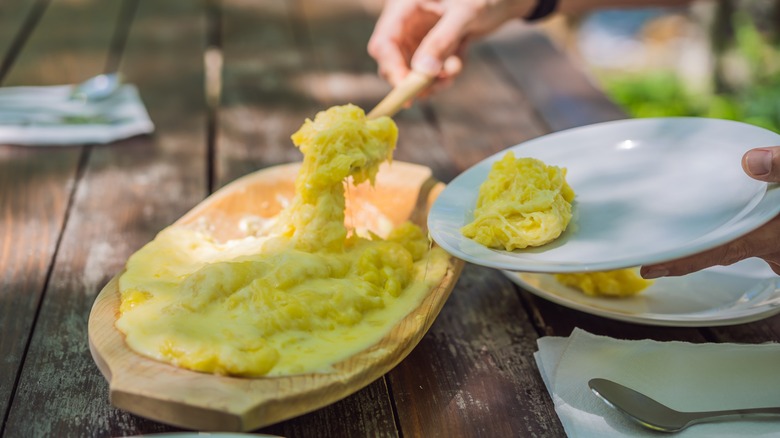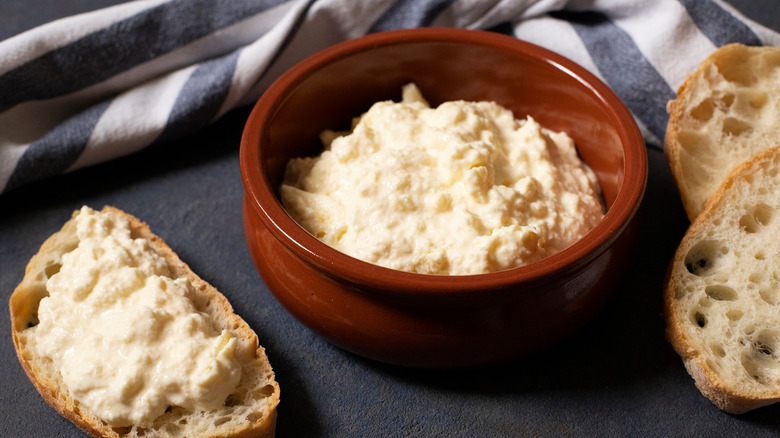The Cheesy Ingredient In Montenegro's Balkan Porridge Variation
The lesser-known Montenegrin cuisine is full of natural ingredients and dishes infused with their Adriatic-seaside origins. Staple Montenegrin dishes often vary from region to region, however they all often incorporate fresh, organic ingredients, like locally-produced cheese and meat, according to Meanderbug. As My Montenegro points out, many of the country's go-to dishes have been "timed-tested" and were formed from multiple, centuries-long influences, such as "Mediterranean, Turkish, Italian and Austrian traditions." It's no secret that Montenegro opts to put tradition front-and-center on their dinner tables.
While tried-and-true dishes, like burek and ćevapi, are well-known for making an appearance on Balkan menus, Montenegro also serves up a hearty porridge dish that is worth trying out.
Kačamak, or Balkan porridge, is a traditional meal typically made using cornmeal, according to The Real World, creating a humble yet satisfying breakfast. The ingredient list to make kačamak is relatively short, but, like many Balkan dishes, the toppings can vary. The finely-ground cornmeal is always mixed with fat, water, and salt, according to The Balkan Hostess. But, toppings can include anything from sour cream to fried bacon.
However, there is one ingredient a generous serving of kačamak would not be complete without, and that's the traditional clotted cream cheese, kajmak.
A creamy addition to any dish
Kajmak holds the same cultural importance and significance that butter does in France, as it is spread on anything and everything in Montenegro, according to Food Perestroika. But, unlike French butter, it is nearly impossible to find outside of the region.
The process to create the cheese starts by heating up milk. While the milk is warming up, the dairy product's proteins will coagulate, and "the fat globules cling to the film that they form," per Food Perestroika. Once this occurs, the milk is left to rest in the pan for about half-a-day to a day's time, and then the film can be collected from the surface. This near-solidified layer of fat and proteins is chilled, strained, and then mixed with salt for flavor.
The Spruce Eats notes that kajmak is either eaten fresh, aged, or fermented. Balkans enjoy their intense flavors, and this cheese is no exception. The final result can be described as strong, though, it can also have a subtle sweetness. The best comparison is it being a variation of clotted cream.
Kajmak can be found on a variety of dishes, it can be slathered on lepinja (Balkan flatbread) for breakfast or on top of pljeskavica (similar to a hamburger). Whether you find yourself venturing to Montenegro for a fix of Balkan flavors, or you'd like to mix up your breakfast routine, it might be worth trying out some kajmak for your next adventurous meal.

